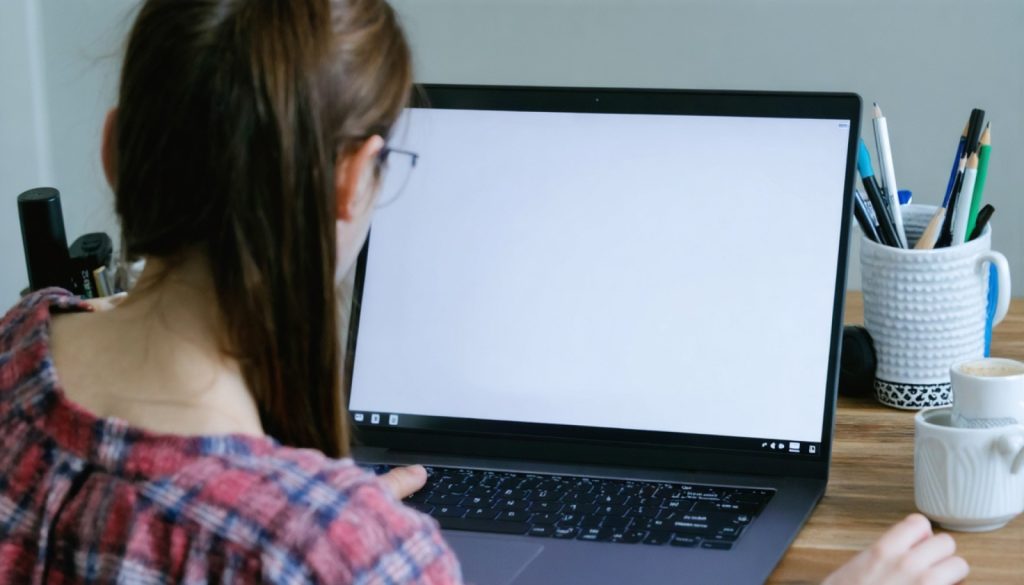
- Average UK residents spend over five hours daily on screens, leading to concerns over digital dependency, likened to “digital sugar.”
- Excessive screen time contributes to a “social recession,” diminishing real-world communication skills and increasing reliance on virtual interactions.
- The physical impact of prolonged screen use includes “tech neck,” chronic pain, digital eye strain, and disrupted sleep cycles.
- Sedentary behaviors linked to screen time raise risks of obesity, diabetes, and heart disease, alongside mental fatigue from poor sleep.
- To combat these effects, recognize screen time triggers, create digital-free zones, and engage in off-screen activities like learning new skills.
- Support groups like Internet and Technology Addicts Anonymous can assist those struggling to self-regulate screen use.
- A shift away from constant digital engagement can lead to improved health and more genuine connections.
In the ever-whirring hum of our digital world, technology is our constant companion. From sunup to sundown, screens clamor for attention with their irresistible glow and endless content. Yet, this ubiquitous presence often comes at a cost—one that weighs heavily on our lives in ways we might not immediately recognize.
The average UK resident spends over five hours each day ensnared by their screens, with one out of four expressing real concern over excessive smartphone usage. This is not a mere habit; it represents a burgeoning dependency—what some experts call “digital sugar,” echoing the addictive allure akin to that of sugary indulgences. This habit might amplify dopamine rushes akin to substance addiction, echoing in every thumb scroll and like-click.
Social Recession
The increased screen time subtly erodes our social fabric, replacing genuine encounters with virtual conversations. The result? A generation finding it increasingly challenging to engage in real-world interactions, with communication skills waning and face-to-face connections becoming more daunting. Behind the digital screen, a world of real conversations lies dormant, giving way to a curated existence dependent on notifications and digital affirmations.
Physical Strain
Beyond the social impact, the physical toll is undeniable. Picture the common sight of heads bowed over smartphones—the classic “tech neck”—which layers strain on the neck muscles and forces shoulders forward. As this posture persists, it can cascade into chronic pain, headaches, and potentially accelerate spinal degeneration. Every hour spent hunched over a screen is like a coin in the toll of musculoskeletal dysfunction, weakening chest muscles while solidifying bad posture.
The eyes, too, suffer under the relentless blue light. The symptoms of digital eye strain—blurred vision and fatigue—often mimic the aches of a long day’s toil. This strain can compromise the body’s natural rhythms, inviting headaches and disrupting sleep cycles—a fact well-known to anyone who’s ever laid awake, phone aglow, in the dark.
Mental and Physical Health Deterioration
The sedentary nature of prolonged screen time also sows seeds of more insidious health concerns. With every hour of passive sitting, the risk of obesity balloons, and the specters of diabetes and heart disease loom larger. Coupled with these physical setbacks, the invitation of mental fatigue through disrupted sleep cycles crescendos into a tiredness that permeates every waking hour.
Steps to Reclaim Your Time and Focus
Breaking free from the overbearing presence of screens requires deliberate action. First, acknowledge when screen time becomes an issue. Dive deep to identify triggers that pull you into endless digital rabbit holes. Then, consciously carve out digital-free zones in your life, like barring screens from the bedroom or dining area.
Creativity offers refuge—seek alternative pursuits that feed the soul and fortify the body. Channel your energy into learning a new instrument, painting, or perhaps hiking under a wide sky far from Wi-Fi’s reach. Imposing a regimen of breaks, like the 20-20-20 rule, can shield your vision and provide a much-needed pause for thought.
Communities like Internet and Technology Addicts Anonymous provide support for those who find self-monitoring difficult, offering solace and strategies to reclaim time once surrendered to screens.
The Key Insight
As intertwined as our lives have become with digital devices, recognizing their impact could be your turning point. Reflect on the value of stepping back to observe a simpler, less connected space. A world not dominated by screens awaits those willing to shift, promising a horizon brimming with genuine connection and robust health beyond the glowing frames.
Unplug to Thrive: How to Reclaim Your Life from Digital Dependency
The Growing Concern of Screen Addiction
The digital age delivers endless possibilities but also brings significant challenges—namely, screen addiction. This pervasive issue, often likened to sugar addiction due to its dopamine-driving effects, significantly influences people’s lives, especially in the UK, where the average person spends over five hours daily on screens.
Real-World Use Cases
1. Productivity Impact in Workplaces: Excessive screen time affects workplace efficiency. Employees often find it difficult to concentrate and become prone to burnout due to constant digital distractions.
2. Effects on Children and Adolescents: Young individuals are particularly susceptible, as screen time affects their social skills and academic performance. Limiting screen time can improve focus and interpersonal interactions.
Physical and Mental Toll of Screen Time
Physical Consequences
– Postural Problems: The infamous “tech neck” can lead to long-term musculoskeletal issues. Good ergonomics, such as adjusting screen heights and incorporating standing desks, can mitigate these risks.
– Eye Strain and Sleep Disruption: Use apps or features that reduce blue light exposure in the evening, such as ‘night mode,’ to help maintain healthier sleep patterns.
Mental Health Impacts
– Mental Fatigue and Stress: Overuse of digital devices is linked to increased stress and a higher likelihood of anxiety and depression. Interventions such as digital detoxes or mindfulness exercises can offer relief.
Market Forecasts and Industry Trends
The growth of the digital wellbeing industry is remarkable. Companies are introducing innovative solutions, such as apps for monitoring screen time and wearables that track physiological responses to screen usage, forecasted to grow steadily in the coming years.
How to Rebalance Your Life
How-To Steps & Life Hacks
1. Set Screen Usage Goals: Use apps to monitor usage, setting realistic goals to reduce non-essential screen time gradually.
2. Create Tech-Free Zones: Establish areas or times when screens are off-limits, fostering genuine connections and reducing dependency.
3. Engage in Screen-Free Activities: Develop hobbies that don’t involve screens, like exercising, reading physical books, or playing board games.
Controversies & Limitations
While digital wellness movements are gaining traction, critics argue about the feasibility of complete digital detoxes in a connected world. Balance, rather than total abstinence, is essential.
Security & Sustainability
Reducing screen time isn’t just beneficial for personal health—it’s also environmentally sustainable. Lower device usage equates to less energy consumption, aligning with global sustainability goals.
Quick Tips for Immediate Application
– Implement the 20-20-20 Rule: Every 20 minutes, take a 20-second break to look at something 20 feet away, reducing eye strain.
– Night-Time Digital Detox: Avoid screens an hour before bedtime, aiding in better sleep quality. Replace this time with other calming pre-bed rituals.
Final Thoughts
Digital technology is an integral part of modern life—but recognizing its drawbacks allows us to find a better balance. By implementing thoughtful strategies and embracing moments away from screens, we can improve our physical health, mental clarity, and overall quality of life.
Explore more about creating a balanced lifestyle by visiting the New York Times and learn how to integrate mindfulness into your modern routine.



